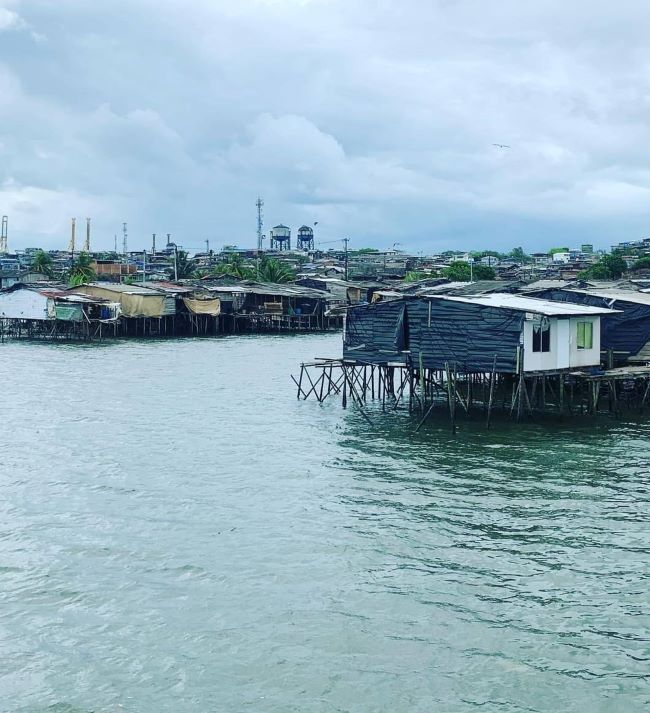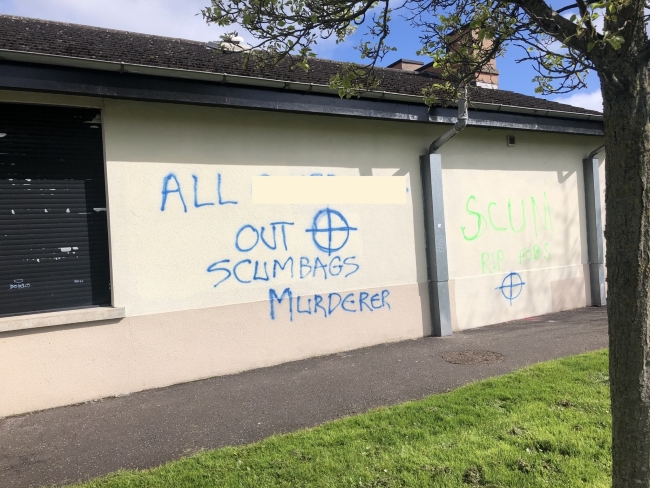The First Line of Defence: Guidelines for Policymakers and Practitioners on Civilian Peacebuilding
Approximately 2 billion people live in regions plagued by violent conflict; by 2030, 50% of the global population will be affected by violence and instability. Current post-conflict peacebuilding strategies are failing to secure durable, stable peace after the formal end to conflicts. Over half of peace accords collapse within five years: poor quality peace often prevails, shaped by ongoing violence, economic precarity and climate crisis. International peacebuilding architecture and process is often outdated, not keeping up with the changing nature of post-accord conflict, contributing to peaceless post-accord societies.
About the research
While research and policy has focused on top-down pro-peace mechanisms and strategies, little is known about how people get on with life in post-peace accord societies. Our research in Colombia, Lebanon, and Northern Ireland provides granular-level insights into how civilians endure ‘peace’. At the micro-level of individual interactions, people have to ‘get on with it’, putting food on the table, getting kids to school and sustinaing daily tasks. This often occurs against a backdrop of continuing threats of violence, stigmatisaton and difficult economic circumstances. Through their micro- actions and communications, civilians ‘make’ local level peace. Where a minimum level of security exists, individuals might thrive, sustaining the peace accord. They may be social entrepreneurs or charismatic community leaders who take important pro-social, pro-peace steps at the inter and/or intra-group levels. By their actions, they may craft initial steps to normalise inter-group relations, becoming local exemplars who might be imitated. However, others will suffer constraints in the form of the continued presence of armed groups, crime, poor economic prospects, and inter-group suspicion. People may willingly or unwillingly 2024participate in and perpetuate these conflictive/divisive dynamics. So peace arrives slowly or partially, if at all.
With support from local partners the “Getting on with it” project has been recording how people in four locations each in Colombia, Lebanon and Northern Ireland navigate through life in post-peace accord contexts. We have used daily pattern of life interviews, community mapping and visualisation, and walking interviews to try to capture individual strategies at the micro-level and understand how lives are lived where peace is either fragile or elusive. We spoke to over 350 civilians about their experiences and daily lives and this report sets out our principal findings and their policy implications.
Key findings: Agency, Encounter and the Micro-level
We find that people living in conflict-affected societies deploy an extensive array of skills to navigate through everyday life and encounters at the intra and inter-group levels. We have identified nine key categories of strategies or social practices deployed by people in response to the implications of conflict (see Figure 1).
Civilian Strategies
 650.png)
Figure 1: Strategies reported in interviews in Colombia, Lebanon, and Northern Ireland
Individuals modulated their micro-level strategies and social practices to suit changing circumstances. People had an ability to ‘read the room’ and draw on a mix of emotional intelligence and intimate knowledge of local geographies and histories.
Inter-group encounter is still circumscribed by spatial barriers, conflict norms, and routine. People traverse geographies structured by convenience, identity, insecurity, violence and their unique lived experiences in the research sites in Colombia, Lebanon, and Northern Ireland. Informal authorities that have historically dominated certain areas continue to exert influence even when violent conflict has decreased. Civilians must often therefore comply with non-state armed groups. People also navigate intra-group encounters where tensions and divisions exist between individuals, such as neighbours, or sub-groups, such as people who adhere to different degrees of political ideology or religious custom.
The most frequent strategy we identified in our research was avoidance. People are more likely to avoid a place, but often because of its association with different groups or situations that might result in anything from awkwardness to tension to violence. This points to notable levels of non-escalatory behaviour (see Figure 2). People overwhelmingly act in order not to exacerbate existing tensions in their day to day lives. Individuals are guided by social norms and employ their local knowledge and emotional intelligence to maintain a perceived ‘holding pattern’ that does not escalate or de-escalate conflict. These micro-dynamics are about conflict containment and often sustain power hierarchies and mechanisms of conflict, even after a peace accord is signed.
Impact
 650.png)
Figure 2. Intended impact of strategies reported in interviews in Colombia, Lebanon, and Northern Ireland
Our research finds that despite differences in degrees of violence across the three cases, the strategies people deploy to navigate their daily lives reflect a concern with anticipatory violence – or the percieved potential for violence to erupt in the future. This impacts major life decisions (e.g. where to live or what profession to pursue) and also seemingly mundane choices (e.g. routes to work or which extracurricular activities to participate in). This is normalised in daily life at the micro-level, yet persistent hyper-vigilance as well as varying levels of trauma from both past and present violence impact civilians’ mental health.
Individuals display a complex relationship with local knowledge. While people demonstrate a high degree of local awareness in navigating insecurity, this also implies knowing when ‘not to know’, a strategy of conscious ignorance to mitigate risk. Such awareness and strategies, and the anticipatory sense of violence were shared by younger cohorts of research participants. This points to the intergenerational transmission of conflict knowledge. It also indicates that distrust and animosity are also passed down generationally, with young people who never experienced the conflict pre-accord engaging in recreational rioting or glorifying the role of weapons and use of violence.
Equally, people demonstrate a persistent distrust in state and formal institutions as both a legacy of the state’s actions during conflict and the failure of its institutions to resolve ongoing issues. This distrust leads non-state armed groups to take on the role of the state even after a peace accord is signed, with individuals voluntarily petitioning armed actors to resolve issues within the community.

Buenaventura. Photo by Clara Voyvodic
We find that although a significant proportion of civilian strategies maintain the status quo through non-escalatory behaviour, the remaining actions are about equally split between escalatory and de-escalatory behaviour. Therefore we must think meaningfully about the role civilians play not only in sustaining conflict dynamics, but in exacerbating them. Civilians, as noted, can escalate their distrust of others into open hostility and aggression, or fall back on stereotypes that reinforce rifts and divisions between different groups and prevents meaningful cooperation and support across sectors. They sometimes use violence, armed or unarmed, against other civilians even within their own group. Civilians also voluntarily seek to collaborate with armed groups against other civilians, either out of ideological conviction or for personal gain. It is also through personal connections at the micro-level that new generations are also recruited into non-state armed groups, perpetuating the cycle of conflict and undermining peace.
Civilians also engage in meaningful and pro-peace actions at the micro-level. Individuals may seek help and support others, teach children and young people pro-peace attitudes, or engage in cooperative and pro-social behaviour with coworkers, neighbours, or strangers - even across group identities. Some individuals emerge as peace entrepreneurs; they engage in repeated micro-level efforts and even seek to organise and inspire others to follow their lead to transform the existing status quo. Through their leadership, these individuals drive initiatives that sometimes transgress conflict norms and help galvanise bottom-up changes, such as:
- Youth programmes that provide alternatives to youths vulnerable to recruitment and radicalisation
- Negotiations with both state and non-state armed groups and with other civilians to mitigate harm and resolve conflicts.
- Creative/social intergroup events that promote pro-social behaviour within and across communities.
- Encourage hyper-local political participation and collective mobilisation
Our findings on agency and encounter at the micro-level point to dynamic environments in which people are both subject to complex social norms, often linked to conflict, but also help make, impose and perpetuate those norms. All of our findings in relation to agency, encounter, and localism are impacted by gender, class, (dis)ability and a range of identity-related factors.

Belfast. Photo by Thia Sagherian-Dickey
Policy Recommendations
Communities and individuals possess significant capabilities in terms of their grounded knowledge and strategies. External actors should find ways to understand them better and work alongside them. This means co-designing projects with local leaders and peace entrepreneuers and developing programmes that build on existing local initiatives/knowledge.
Communities do not often neatly align with the divisions or positions reflected in national-level peace accords. Efforts to collaborate and work with local communities should recognise the heterogeneity of individual experiences and perspectives, and that leaders or political actors may seek to speak for communities that don’t feel represented by them. This is particularly relevant for outsiders considering which local partners to engage with to avoid exacerbating local divisions.
Experiences of conflict and anticipatory violence are not only determined by group identity but also intervening factors, such as location, socio-economic status, gender, race, and individual circumstances. These micro-level differences can make it difficult for people, even within groups, to empathise and cooperate with others. Safe spaces for open dialogue and transparency may promote better understanding and empathy within and across communities.
A minimum level of security is required for many pro-peace and pro-social initiatives to take place. The pervasive sense of anticipatory violence in Colombia, Lebanon, and Northern Ireland poses questions about the ability of peace accords to move beyond negative peace or decrease violence. The issue of violence reduction requires attention as current ‘best practice’ does not seem to be working.
The hyper-vigilance required in high-stress, unpredictable environments means a prevalence of complex post-traumatic stress disorder, anxiety, depression, and suicide risk. These public health issues receive significantly less attention than other conflict-related issues. International actors and governments should co-develop programmes with local actors to address trauma from long-term violence exposure.
Authors
Dr. Roddy Brett, Reader in Peace and Conflict Studies, University of Bristol (Principal Investigator), Dr. Clara Voyvodic, Senior Research Associate, University of Bristol, Dr. Thia Sagherian-Dickey, Senior Research Associate, Durham University, Professor Roger Mac Ginty, Professor of Peace and Conflict Studies, Durham University
Further information
Read country-specific reports here:
